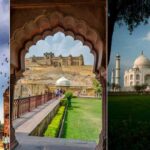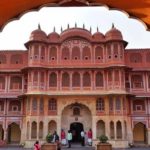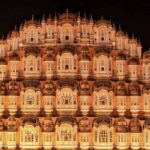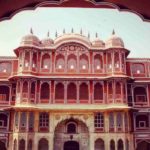Top 12 Destinations to visit in Jaipur, the Pink City, offers a kaleidoscope of experiences with its rich history, majestic architecture, and vibrant culture. Start your journey at the Amber Fort, an architectural masterpiece blending Hindu and Mughal styles, and enjoy an evening Light and Sound show. Don’t miss the iconic Hawa Mahal, the Palace of Winds, with its unique façade resembling a honeycomb. Explore the City Palace, a complex of courtyards and buildings that showcases royal grandeur, and marvel at the astronomical instruments at Jantar Mantar, a UNESCO World Heritage site.
Take a trip to Nahargarh Fort for breathtaking sunset views over Jaipur, and visit Jaigarh Fort to see the world’s largest cannon on wheels. For a dose of culture, the Albert Hall Museum houses an extensive collection of artifacts, while the serene Birla Mandir temple, made of pure white marble, offers a peaceful retreat.
Experience traditional Rajasthani culture at Chokhi Dhani with its folk music, dance, and cuisine. For a picturesque view, Jal Mahal, the Water Palace, situated in the middle of Sagar Lake, is a must-see. Finally, the vibrant Patrika Gate provides the perfect backdrop for stunning photographs, encapsulating the essence of Rajasthani craftsmanship and art Top 12 Destinations to visit in Jaipur.
Each destination in Jaipur tells a story of its illustrious past and present, making it a must-visit for travelers seeking a dive into India’s royal heritage and cultural splendor Jaipur Tour Planner.
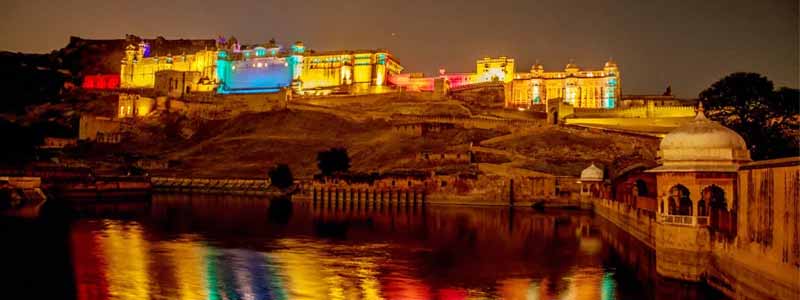
Amber Fort (Amer Fort):
Amber Fort, also known as Amer Fort, is one of the most iconic and majestic forts in India, located in Amer, a town with an area of 4 square kilometers, situated 11 kilometers from Jaipur, Rajasthan. Built in 1592 by Raja Man Singh I, one of the trusted generals of Emperor Akbar, the fort is an exquisite example of Rajput architecture and reflects the blend of Hindu and Islamic architectural styles. Made primarily of red sandstone and marble, Amber Fort consists of a series of gates, cobbled paths, and large ramparts.
The fort overlooks Maota Lake, which is the main source of water for the palace. Its location on a hill allows for natural defense, and its construction reflects the artistic and military ingenuity of its creators. The complex is divided into four main sections, each with its own courtyard. Key attractions within the fort include the Diwan-i-Aam (Hall of Public Audience), the Diwan-i-Khas (Hall of Private Audience), the Sheesh Mahal (Mirror Palace), and the Sukh Niwas where a cool climate is artificially created by winds that blow over a water cascade within the palace, Jaipur Tour Packages.
The Sheesh Mahal is particularly famous for its intricate mirror work, where thousands of mirror pieces adorn the walls and ceiling, creating a stunning effect with just a single lamp flame. This palace was built for Queen Jodha, and the craftsmanship is a testament to the artistic talent of that era.
Visitors can either walk up to the fort from the road or opt for an elephant ride to the main entrance. The sound and light show held in the evening, which narrates the history of Jaipur and the fort, is a not-to-be-missed experience that adds to the charm of Amber Fort Top 12 Destinations to visit in Jaipur.
The fort’s architectural beauty and historical significance attract tourists from all over the world. Its legacy is not just limited to its military history but extends to its role in the cultural and social life of the Rajput era. Today, Amber Fort stands not only as a proud reminder of the fierce and artistic Rajputana but also as a symbol of Rajasthan’s rich heritage, making it a must-visit for anyone traveling to India.
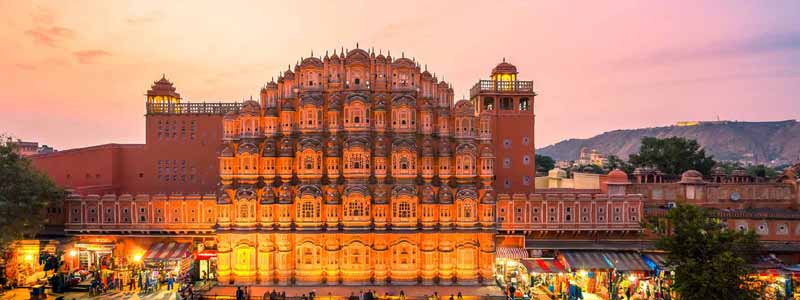
Hawa Mahal:
Hawa Mahal, also known as the “Palace of Winds,” is one of the most iconic landmarks of Jaipur, Rajasthan, India. Built-in 1799 by Maharaja Sawai Pratap Singh, the palace is an architectural marvel that exemplifies the rich cultural heritage of Rajasthan.
The unique five-story exterior of Hawa Mahal is its most distinctive feature, with its façade adorned with 953 small windows called jharokhas. These intricately carved windows were designed to allow the royal ladies to observe street festivals and everyday life in the city without being seen, thus maintaining their privacy in accordance with the strict purdah system prevalent during that time. The lattice work on these windows also served the practical purpose of allowing cool air to pass through, making the palace comfortable even in the scorching summers of Rajasthan Top 12 Destinations to visit in Jaipur.
Constructed in the form of the crown of Lord Krishna, Hawa Mahal is made of red and pink sandstone, which gives it the characteristic pink hue that Jaipur is famous for. The palace’s architecture is a beautiful blend of Rajput and Mughal styles, featuring delicate floral patterns, domes, and arched entrances.
While the exterior of Hawa Mahal is its most recognizable aspect, the interior consists of small chambers and corridors, which were once used by the royal ladies for leisure and relaxation. Visitors can explore the various levels of the palace and enjoy panoramic views of the bustling streets of Jaipur from its windows.
Today, Hawa Mahal stands as a symbol of Jaipur’s rich history and architectural heritage, attracting tourists from around the world. It is not only a testament to the grandeur of Rajasthan’s royal past but also a tribute to the ingenuity of its architects and craftsmen. A visit to Hawa Mahal is a must for anyone seeking to experience the charm and splendor of Jaipur Tourism.
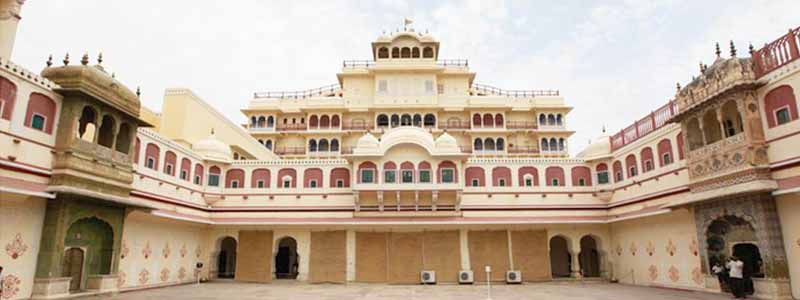
City Palace:
The City Palace in Jaipur is a magnificent complex located in the heart of the city. It was built by Maharaja Sawai Jai Singh II, the founder of Jaipur, in the early 18th century. The palace complex is a stunning blend of Rajput, Mughal, and European architectural styles, reflecting the grandeur and opulence of Rajasthan’s royal heritage Top 12 Destinations to visit in Jaipur.
Spread over a vast area, the City Palace comprises several palaces, courtyards, gardens, and buildings, making it one of the most impressive royal residences in India. The palace complex is divided into two main parts: the Chandra Mahal and the Mubarak Mahal.
The Chandra Mahal, or Moon Palace, is the most prominent structure within the City Palace complex. It is a seven-story building with each floor representing a distinct theme and serving different purposes. The topmost floor, known as the Mukut Mahal, offers panoramic views of the city and houses exquisite artifacts, including royal costumes, arms, and paintings.
Adjacent to the Chandra Mahal is the Mubarak Mahal, which was originally built as a reception hall and now serves as a museum. The Mubarak Mahal displays an extensive collection of royal costumes, textiles, weapons, and artifacts belonging to the erstwhile rulers of Jaipur.
Other notable attractions within the City Palace complex include the Diwan-i-Khas (Hall of Private Audience), Diwan-i-Aam (Hall of Public Audience), and the Pritam Niwas Chowk, which features four beautifully decorated doorways representing the four seasons.
The City Palace also houses the Maharaja Sawai Man Singh II Museum, which showcases a remarkable collection of art, manuscripts, and royal memorabilia. Visitors can explore the rich history and cultural heritage of Jaipur through the exhibits displayed in the museum Top 12 Destinations to visit in Jaipur.
Today, the City Palace is not only a historical landmark but also serves as the residence of the royal family of Jaipur. It continues to be one of the most visited tourist attractions in the city, offering visitors a glimpse into the extravagant lifestyle of the erstwhile rulers of Rajasthan.
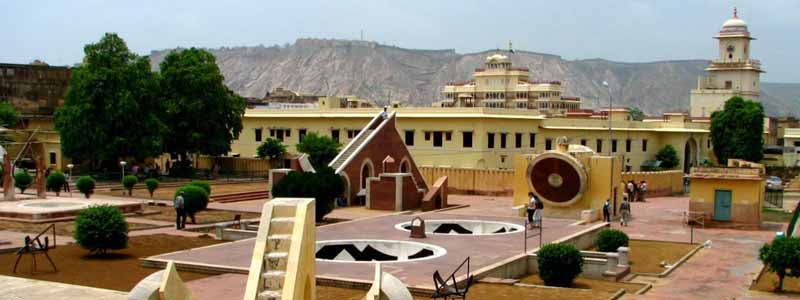
Jantar Mantar:
Jantar Mantar in Jaipur is a UNESCO World Heritage Site and one of the largest and most well-preserved astronomical observatories in India. It was built by Maharaja Sawai Jai Singh II, the founder of Jaipur, in the early 18th century.
The Jantar Mantar consists of a collection of architectural astronomical instruments, designed to measure time, predict eclipses, track celestial bodies’ orbits, and observe the positions of stars and planets. These instruments were crucial for the accurate calculation of celestial phenomena and played a significant role in astronomical research and timekeeping during that era Top 12 Destinations to visit in Jaipur.
The observatory houses several unique instruments, including the Samrat Yantra, which is the largest sundial in the world. It stands at a height of 27 meters and can accurately measure time to within 20 seconds. Other notable instruments include the Jai Prakash Yantra, which consists of two concave hemispherical structures used to determine the position of celestial objects, and the Ram Yantra, which is a massive cylindrical structure used to measure the altitude and azimuth of celestial bodies.
Each instrument in the Jantar Mantar is meticulously designed and constructed using stone, marble, and metal, ensuring precision and accuracy in astronomical observations. The observatory’s architectural design also reflects the principles of Hindu cosmology and astrology, with each instrument aligned to specific celestial phenomena.
Visitors to the Jantar Mantar can explore the various instruments and learn about their functions and significance through guided tours and informational displays. The site is not only a testament to the scientific achievements of ancient India but also a fascinating example of architectural ingenuity and astronomical prowess Top 12 Destinations to visit in Jaipur.
Today, the Jantar Mantar continues to be a popular tourist attraction in Jaipur, attracting visitors from around the world who are intrigued by its historical significance and scientific marvels. It offers a unique opportunity to delve into the rich cultural heritage and scientific advancements of India’s past.
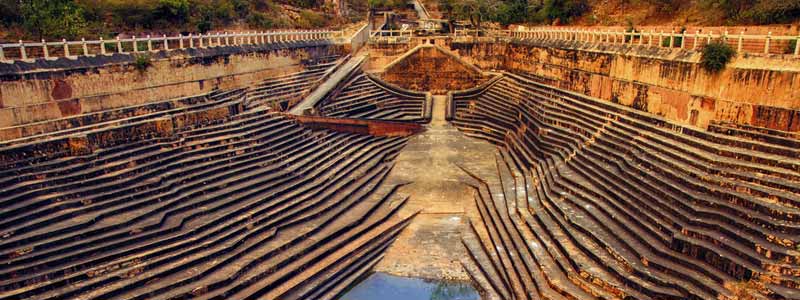
Nahargarh Fort:
Nahargarh Fort, perched atop the Aravalli hills overlooking the Pink City of Jaipur, is a majestic fortress steeped in history and surrounded by breathtaking views. Built in 1734 by Maharaja Sawai Jai Singh II, the founder of Jaipur, Nahargarh Fort was originally constructed as a defense fortification to protect the city.
The fort’s name, Nahargarh, translates to “abode of tigers,” with a legend suggesting that it was named after a spirit named Nahar Singh Bhomia, who haunted the site during its construction and demanded propitiation. Despite its eerie origins, Nahargarh Fort now stands as a symbol of Jaipur’s rich architectural and cultural heritage.
The fort features impressive ramparts, bastions, and intricate architecture, blending both Rajput and Mughal styles. Visitors can explore various sections of the fort, including palaces, temples, and gardens. The Madhavendra Bhawan, a series of interconnected suites built for the king’s wives, is one of the most notable attractions within the fort. Each suite is designed with distinct features, including balconies, courtyards, and frescoes, showcasing the opulent lifestyle of the royal inhabitants.
Aside from its historical significance and architectural splendor, Nahargarh Fort offers panoramic views of Jaipur city, making it a popular spot for tourists and locals alike, especially during sunset. The vista from the fort provides a stunning backdrop of the city’s skyline, with iconic landmarks such as the City Palace and Hawa Mahal visible in the distance Top 12 Destinations to visit in Jaipur.
Nahargarh Fort has also been featured in various films and cultural events, further adding to its allure and popularity. It serves as a cultural hub, hosting art exhibitions, concerts, and other events that showcase Jaipur’s vibrant arts and heritage scene.
Whether you’re interested in history, architecture, or simply soaking in panoramic views of Jaipur, Nahargarh Fort offers a memorable experience that captures the essence of Rajasthan’s regal charm and natural beauty.
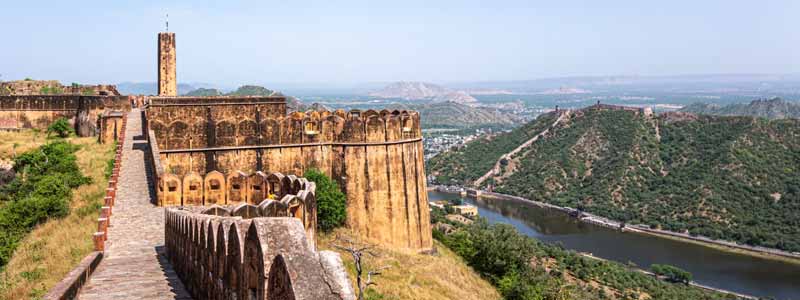
Jaigarh Fort:
Jaigarh Fort, standing tall on the rugged hills of the Aravalli Range near Jaipur, is an imposing fortress that boasts both historical significance and architectural grandeur. Built in the early 18th century by Maharaja Sawai Jai Singh II, the founder of Jaipur, Jaigarh Fort was primarily constructed to protect the Amer Fort and the city of Jaipur from invasions Top 12 Destinations to visit in Jaipur.
The fort’s strategic location atop the hills provides commanding views of the surrounding landscape, making it an ideal defensive stronghold. Its massive walls, bastions, and watchtowers reflect the military prowess of the Rajput rulers and their commitment to fortifying their kingdom against external threats.
One of the most notable features of Jaigarh Fort is the Jaivana Cannon, which holds the Guinness World Record for being the world’s largest cannon on wheels. Built in the 18th century, this formidable cannon was never actually used in battle, but its sheer size and engineering brilliance are a testament to the technological advancements of that era.
Inside the fort, visitors can explore various structures and attractions, including palaces, temples, and reservoirs. The Vijay Garh, or Victory Fort, is the main palace within Jaigarh Fort, featuring elegant architecture and intricate frescoes that reflect the opulence of the royal lifestyle.
Another highlight of Jaigarh Fort is the water harvesting system, which includes large tanks and reservoirs that were used to collect rainwater and ensure a steady water supply during times of siege. The fort’s well-preserved architecture and engineering marvels provide insights into the ingenuity of Rajput craftsmanship and their mastery of defensive strategies.
Apart from its historical and architectural significance, Jaigarh Fort offers panoramic views of the surrounding landscape, including the Amer Fort and the Jaipur cityscape. Visitors can enjoy leisurely walks along the fort’s ramparts while taking in the scenic beauty of the Aravalli hills.
Today, Jaigarh Fort stands as a proud symbol of Rajasthan’s rich heritage and serves as a popular tourist destination, attracting visitors from around the world who are drawn to its historical allure and breathtaking vistas Top 12 Destinations to visit in Jaipur.
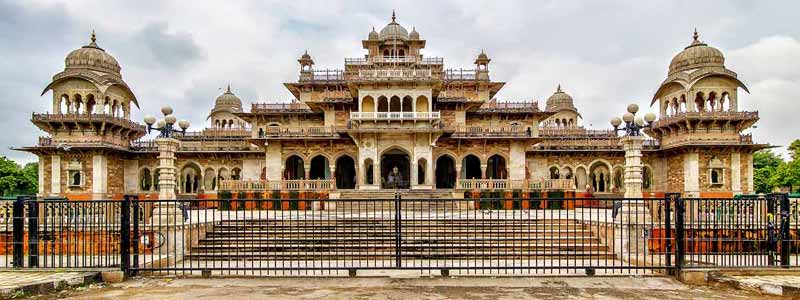
Albert Hall Museum:
The Albert Hall Museum, located in the heart of Jaipur, Rajasthan, is a magnificent example of Indo-Saracenic architecture and serves as the state museum of Rajasthan. It was built in the late 19th century by Maharaja Sawai Ram Singh II, the then ruler of Jaipur, and was named after Prince Albert, the consort of Queen Victoria of England Top 12 Destinations to visit in Jaipur.
The museum’s architecture is a captivating blend of traditional Indian, Mughal, and European styles, featuring intricately carved arches, domes, and minarets. The exterior of the building is adorned with beautiful stone carvings and decorative motifs, making it a visual delight for visitors.
The Albert Hall Museum houses an extensive collection of artifacts, including paintings, sculptures, textiles, ceramics, arms and armor, and decorative arts. Its exhibits span various periods of history, from ancient to modern times, showcasing the rich cultural heritage of Rajasthan and India.
One of the highlights of the museum is the Egyptian mummy, which is one of the few mummies on display in India. The museum also boasts a vast collection of miniature paintings, including works from the Mughal, Rajput, and Persian schools of art Top 12 Destinations to visit in Jaipur.
In addition to its permanent exhibits, the Albert Hall Museum hosts temporary exhibitions, cultural events, and educational programs throughout the year, attracting both locals and tourists alike. The museum’s sprawling courtyards and gardens provide a tranquil retreat from the bustling city, making it a popular destination for leisurely strolls and picnics.
The Albert Hall Museum stands as a testament to Jaipur’s rich cultural legacy and its commitment to preserving and promoting its artistic heritage. It offers visitors a fascinating journey through time, providing insights into the history, art, and culture of Rajasthan and India.
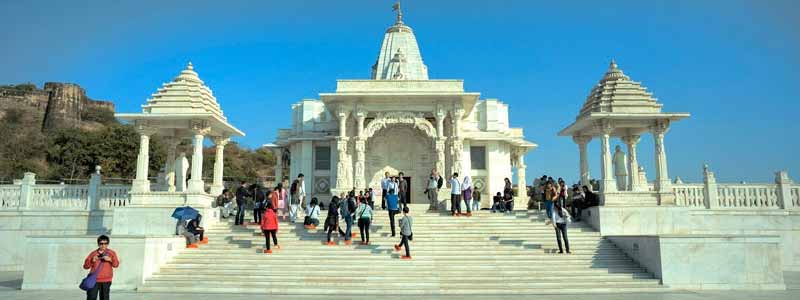
Birla Mandir:
The Birla Mandir, also known as the Laxmi Narayan Temple, is a beautiful Hindu temple located in Jaipur, Rajasthan. Built by the renowned Birla family, prominent industrialists of India, the temple is dedicated to Lord Vishnu (Narayan) and Goddess Lakshmi, the Hindu deities of wealth and prosperity.
Constructed in pure white marble, the Birla Mandir is a stunning example of modern architectural design blended with traditional Hindu temple architecture. The temple’s exterior is adorned with intricate carvings, sculptures, and motifs, while its interior features beautifully crafted idols of Lord Vishnu and Goddess Lakshmi, along with other Hindu deities.
The main sanctum of the temple houses a large marble idol of Lord Vishnu and Goddess Lakshmi, intricately sculpted and adorned with gold and precious stones. Surrounding the main shrine are smaller shrines dedicated to other Hindu gods and goddesses, including Lord Shiva, Lord Ganesha, and Goddess Saraswati.
The Birla Mandir is not only a place of worship but also a center for spiritual and cultural activities. Devotees and visitors come to the temple to offer prayers, seek blessings, and participate in religious ceremonies and rituals. The temple complex also includes a serene garden, where visitors can relax and enjoy the peaceful surroundings.
One of the most striking features of the Birla Mandir is its illuminated façade, which shines brilliantly against the backdrop of the night sky, making it a prominent landmark in Jaipur. The temple’s beauty is further enhanced during festivals and special occasions when it is adorned with lights and decorations, attracting a large number of devotees and tourists Top 12 Destinations to visit in Jaipur.
The Birla Mandir welcomes people of all faiths and backgrounds, promoting religious harmony and unity among different communities. It is not only a place of worship but also a symbol of peace, tolerance, and spirituality, embodying the timeless values of Hinduism.
For visitors to Jaipur, the Birla Mandir offers a serene and spiritual retreat, where they can experience the divine presence and soak in the beauty of this architectural masterpiece.
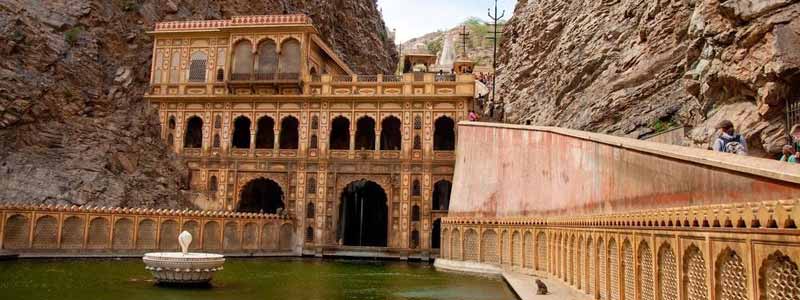
Galtaji or Monkey Temple:
Galtaji, also known as the Monkey Temple, is an ancient Hindu pilgrimage site located near Jaipur, Rajasthan. Nestled amidst the scenic surroundings of the Aravalli hills, Galtaji is renowned for its natural water springs, sacred temples, and numerous monkeys that inhabit the area Top 12 Destinations to visit in Jaipur.
The main temple complex at Galtaji is dedicated to Lord Hanuman, the monkey god, and is believed to have been built in the 18th century. The temple is built using pink sandstone and features intricately carved pillars, domes, and arches, showcasing traditional Rajasthani architecture.
One of the most striking features of Galtaji is its series of natural water springs, known as kunds, which are believed to have medicinal properties and are considered holy by Hindu devotees. The most famous among these is the Galta Kund, which is surrounded by temples and pavilions and is used by pilgrims for bathing and purification rituals.
The temple complex is spread across several levels, with various shrines and pavilions dedicated to different deities. Visitors can explore the numerous temples within the complex, including the Ramgopalji Temple, the Surya Temple, and the Balaji Temple, each of which has its own unique architecture and religious significance.
One of the highlights of a visit to Galtaji is the opportunity to interact with the resident monkeys that inhabit the area. These monkeys are considered sacred and are an integral part of the temple’s ecosystem. Visitors can observe them going about their daily activities, playing, and interacting with each other, adding to the unique charm of Galtaji.
Galtaji is not only a place of religious significance but also a haven for nature lovers and photographers, offering stunning views of the surrounding hills and valleys. The tranquil atmosphere and serene surroundings make it an ideal destination for meditation and introspection Top 12 Destinations to visit in Jaipur.
For visitors to Jaipur, Galtaji offers a unique cultural and spiritual experience, allowing them to immerse themselves in the rich heritage and natural beauty of Rajasthan. Whether it’s seeking blessings at the temples, taking a dip in the sacred waters, or simply enjoying the company of the playful monkeys, Galtaji has something to offer for everyone.
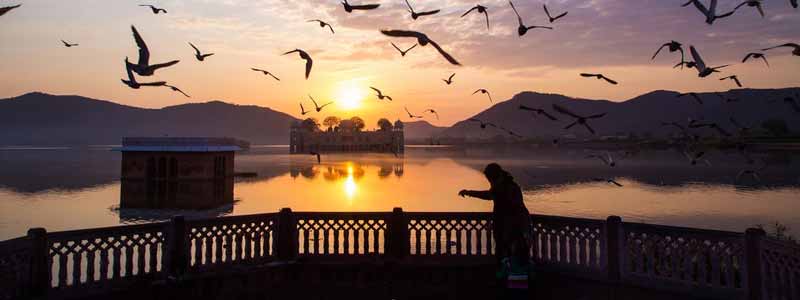
Jal Mahal:
Jal Mahal, translated as the “Water Palace,” is a stunning architectural marvel situated in the middle of Man Sagar Lake in Jaipur, Rajasthan. Built-in the 18th century by Maharaja Madho Singh I, Jal Mahal exemplifies the Rajputana architectural style and is a testament to the ingenuity of ancient engineering.
The palace’s most distinctive feature is its location, with only one floor visible above the water level while the remaining four floors are submerged beneath the lake’s surface. This unique design allows Jal Mahal to appear as if it is floating on the tranquil waters of Man Sagar Lake, creating a picturesque sight that captivates visitors Top 12 Destinations to visit in Jaipur.
While the exterior of Jal Mahal is adorned with intricate Rajput-style carvings and arched doorways, the interior of the palace is largely inaccessible to the public. However, the palace’s enchanting beauty can be admired from the lakeshore or from nearby viewpoints, offering breathtaking views of the palace against the backdrop of the Aravalli hills.
Jal Mahal has undergone extensive restoration efforts in recent years to preserve its architectural heritage and ensure its longevity. The surrounding area has also been developed into a recreational spot, with walkways, gardens, and viewpoints where visitors can enjoy the serene beauty of the lake and palace.
Although entry into the palace itself is restricted, visitors can still experience the magic of Jal Mahal by taking a boat ride on Man Sagar Lake or simply admiring its beauty from afar. Sunset is a particularly popular time to visit, as the palace is bathed in golden hues, creating a mesmerizing spectacle.
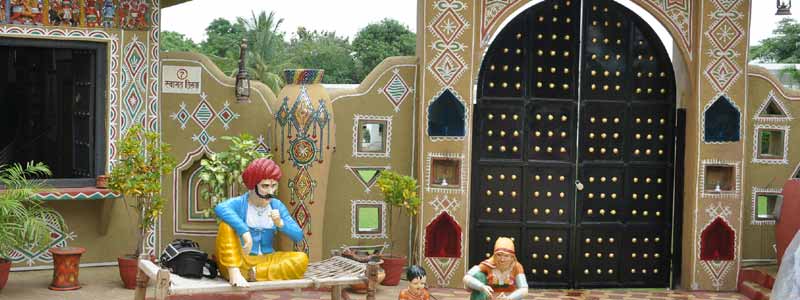
Chokhi Dhani:
Chokhi Dhani is a unique cultural village resort located on the outskirts of Jaipur, Rajasthan. It offers visitors an authentic Rajasthani experience, showcasing the vibrant culture, cuisine, and traditions of the region Top 12 Destinations to visit in Jaipur.
Modeled after a traditional Rajasthani village, Chokhi Dhani is designed to immerse visitors in the rich heritage and hospitality of Rajasthan. The resort features mud-plastered huts, thatched roofs, and rustic décor, creating a charming ambiance reminiscent of rural Rajasthan.
One of the main highlights of Chokhi Dhani is its cultural entertainment, which includes folk music and dance performances by local artists. Visitors can enjoy traditional Rajasthani dances such as Ghoomar, Kalbelia, and Bhavai, accompanied by live music played on traditional instruments like the dholak, tabla, and harmonium.
Another major attraction at Chokhi Dhani is the elaborate Rajasthani feast, which offers a delectable spread of local delicacies and traditional dishes. Guests can savor authentic Rajasthani cuisine, including dal bati churma, gatte ki sabzi, ker sangri, and a variety of sweets and desserts.
Apart from cultural performances and culinary delights, Chokhi Dhani also offers a range of recreational activities and experiences. Visitors can take camel rides, bullock cart rides, or elephant rides around the village, explore the handicraft stalls and souvenir shops, or participate in activities like pottery making, puppet shows, and mehndi (henna) application Top 12 Destinations to visit in Jaipur.
Chokhi Dhani is not just a tourist attraction but also a cultural institution that aims to preserve and promote the rich heritage of Rajasthan. It provides employment opportunities to local artisans, musicians, and performers, while also offering visitors a memorable and immersive experience of Rajasthani culture.
For travelers visiting Jaipur, a visit to Chokhi Dhani offers a unique opportunity to experience the warmth, hospitality, and vibrancy of Rajasthan’s rural life, making it a must-visit destination for anyone seeking an authentic cultural experience in India.
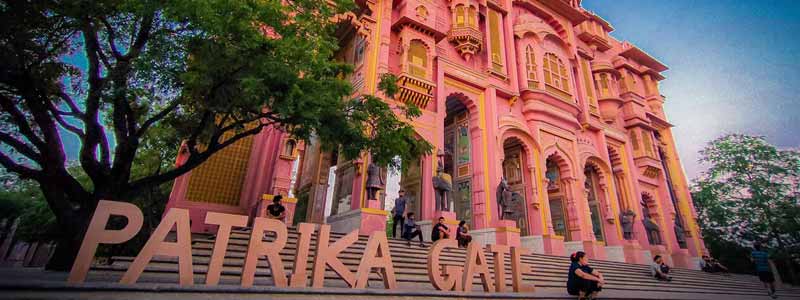
Patrika Gate:
Patrika Gate is a vibrant and colorful architectural marvel located in Jaipur, Rajasthan. It is one of the newer attractions in the city, known for its stunning design and intricate artwork Top 12 Destinations to visit in Jaipur.
The Patrika Gate serves as the ninth gate of Jaipur and is located at Jawahar Circle, one of the city’s prominent landmarks. It was inaugurated in 2016 and has quickly become a popular tourist destination and a favorite spot for photography enthusiasts.
What sets Patrika Gate apart is its striking and elaborate design, which features intricately carved pillars, arches, and domes adorned with vibrant paintings and murals. The gate showcases the rich cultural heritage of Rajasthan, with depictions of historical events, traditional Rajasthani art forms, and iconic landmarks of the state.
Each section of the gate is dedicated to a specific theme or aspect of Rajasthan’s culture, showcasing its diverse traditions, festivals, wildlife, and architecture. The vibrant colors and detailed artwork make Patrika Gate a visually stunning attraction that mesmerizes visitors Top 12 Destinations to visit in Jaipur.
Apart from its artistic beauty, Patrika Gate also serves as a tribute to the city of Jaipur and its vibrant culture. It has become a symbol of pride for the locals and a must-visit destination for tourists seeking to capture the essence of Rajasthan’s rich heritage.
Visitors to Patrika Gate can explore the various sections of the gate, take photographs against the backdrop of the colorful murals, and admire the intricate craftsmanship that went into its construction. The gate is especially enchanting during sunset when the golden light illuminates its vibrant hues, creating a magical atmosphere.
Overall, Patrika Gate is a testament to Jaipur’s artistic talent and cultural richness, offering visitors a captivating glimpse into the soul of Rajasthan through its stunning architecture and vibrant artwork.


